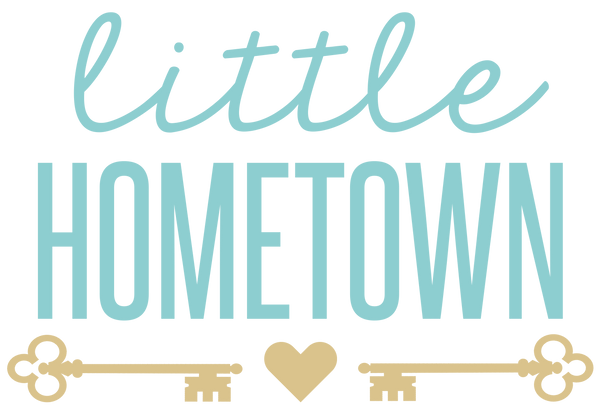Burp cloths are one of those quiet, constant comforts in the early days of parenting. You reach for them while feeding, cuddling, carrying your baby through sleepy mornings or fussier afternoons. They’re a layer between you and the spills, but more than that, they’re part of the rhythm of care.
So when you’re choosing them, you’re picking what will touch your baby’s cheek, your shoulder, and sometimes, your heart.
Let’s take a closer look at what makes the best fabric for baby burp cloths, and how to pick what feels right for you and your little one.
Which Fabric is the Best?
Cotton
Cotton is gentle, breathable, and familiar. It softens beautifully with each wash and is easy to care for. For everyday use, it’s a trusted choice that handles messes well and stays light against your baby’s skin.
Muslin
Muslin is airy and lightweight, often used in warmer climates or when you want something that dries quickly. Its open weave gives it a soft, lived-in feel that only improves over time.
Bamboo
Bamboo fabric is incredibly soft to the touch and naturally hypoallergenic. It’s a comforting option for babies with extra-sensitive skin and holds up well to daily use. Bamboo blends also tend to be moisture-wicking and antimicrobial, which is helpful during all those tiny-but-mighty spit-ups.
The Hydrangeas Burp Cloth & Bib Combo and Blue Crab Burp Cloth & Bib Combo from Little Hometown feature a bamboo and cotton blend that feels velvety-soft and beautifully breathable!
Terry Cloth
Terry cloth is thicker and highly absorbent. It’s practical when you need a sturdier layer, though it’s a bit bulkier and not as breathable as other options. Some parents keep one or two on hand just in case.
Microfiber
Microfiber dries fast and holds moisture well, but it’s not a natural fiber and may not be as soothing on a baby’s delicate skin. If you use microfiber, it’s best saved for outer layers or cleanup rather than direct contact.
What Should You Consider?
The “best” fabric depends on your baby and your day-to-day rhythm. Babies who spit up often might benefit from highly absorbent layers like cotton or terry, while families living in warmer regions may reach more often for muslin. Babies with eczema or other sensitivities tend to respond well to bamboo blends, thanks to their natural softness and breathability.
Laundry habits matter too. If you're washing frequently, pick fabrics that stand up to regular cleaning while staying soft. Little Hometown’s Southern Gentleman Burp Cloth & Bib Combo is a good everyday pick for this! It holds its shape and comfort wash after wash.
Features That Make a Difference
Fabric is the first thing to consider, but how a burp cloth is made also plays a part in how much you’ll love using it. A few thoughtful details go a long way:
- Multiple layers help with absorbency while keeping the outer fabric soft and smooth.
- A wider cut offers better shoulder coverage, especially during longer feeding sessions.
- Rounded or reinforced edges tend to wear better over time and feel softer against your baby’s face.
Washing and Caring for the Fabric
A little love in the laundry makes all the difference. Washing your burp cloths with a gentle, fragrance-free detergent keeps them soft enough for baby’s delicate skin and free of anything that doesn’t belong near those sweet cheeks. Skipping fabric softeners helps the fabric stay absorbent, while air drying, or a low, quiet tumble, preserves their softness.
It’s comforting to have a few clean cloths nearby, tucked beside the crib, draped over your nursing chair, or folded in the diaper bag. After a feed, a quick rinse and set-aside helps them stay fresh until wash day. These little habits turn daily care into quiet acts of love.
Final Thoughts
There’s no one perfect answer, just the choice that feels right in your hands and works gently for your baby. Some days, you’ll need softness. Other days, you’ll need strength. Having a few thoughtfully chosen fabrics gives you both.
The most comforting moments often come wrapped in something simple. A cloth you’ve folded a hundred times. A snap that clicks into place just when you need it. And a soft fabric that rests peacefully against your baby’s cheek.
If you're building your collection or gifting something special, Little Hometown’s signature burp cloth & bib combos offer the kind of comfort you reach for again and again.
Key Takeaways
- Cotton, bamboo, and muslin are among the best fabrics for baby burp cloths due to their softness, breathability, and absorbency.
- Bamboo blends are ideal for babies with sensitive skin, offering a naturally hypoallergenic and moisture-wicking option.
- The right fabric choice depends on your baby’s needs, feeding frequency, and how often you do laundry.
- Multi-layered, soft-edged cloths with generous sizing tend to be more comfortable and practical.
- Washing with fragrance-free detergent and avoiding fabric softeners helps preserve softness and absorbency.
FAQs
Q1: What is the softest fabric for baby burp cloths?
A: Bamboo fabric is often considered the softest, making it ideal for babies with sensitive or delicate skin.
Q2: Are muslin burp cloths better than cotton?
A: Muslin is lighter and dries faster, while cotton is slightly thicker and more absorbent. Both are gentle and baby-safe.
Q3: How many layers should a good burp cloth have?
A: 3 to 5 layers is ideal. This provides enough absorbency without making the cloth feel too bulky on your shoulder.
Q4: Can I use microfiber burp cloths for newborns?
A: Microfiber is absorbent, but it’s a synthetic material and may not be as gentle as natural fabrics for direct contact with newborn skin.
Q5: How should I wash my baby’s burp cloths to keep them soft?
A: Use a gentle, fragrance-free detergent, avoid fabric softeners, and either air dry or tumble dry on low.

